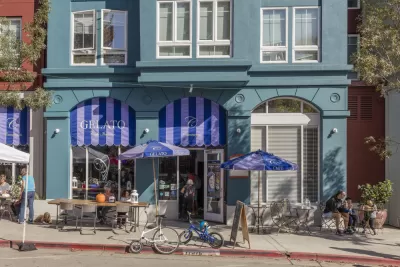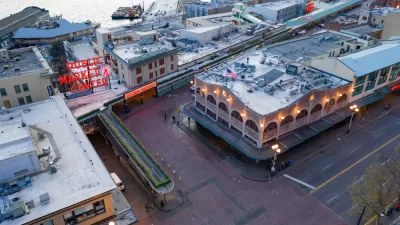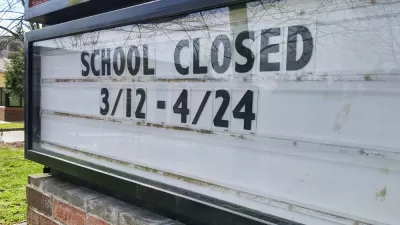Businesses and public health officials are working together to develop guidelines to provide goods and services to the public safely. They're visioning creative ways to bring businesses outdoors and promoting al fresco spaces.

As businesses begin to reopen to the public in cities across the country, officials and residents consider what measures are necessary to ensure public safety. Reduced occupancy maximums, distancing guidelines, and use of masks are among the stipulations of "Safe Start" recovery plans like the Modified Phase 1 led by Washington Governor Jay Inslee. Steven Fesler argues that businesses should prioritize open-air spaces, like al fresco streets, in light of recent evidence that the novel coronavirus typically spreads in indoor, enclosed spaces.
"The Modified Phase 1 variance, however, only empowers the local health authority to impose standards on businesses. It does not empower Public Health — Seattle & King County to direct what local governments do to further advance the cause of the variance for economic vitality and public health," writes Fesler. Fesler says that local governments have generally left businesses in the dark without helping to develop plans to enable al fresco settings in their business models.
Nearby cities are starting to take note. In Redmond, Washington, local authorities announced plans for more outdoor dining and retail in public spaces. Could yoga studios hold classes in public parks? These decisions will be made with guidance from leading best practices with economic vitality and aid in public health in mind.
FULL STORY: Pandemic Recovery Guidance Should Emphasize Al Fresco Business Operations

Alabama: Trump Terminates Settlements for Black Communities Harmed By Raw Sewage
Trump deemed the landmark civil rights agreement “illegal DEI and environmental justice policy.”

Planetizen Federal Action Tracker
A weekly monitor of how Trump’s orders and actions are impacting planners and planning in America.

Why Should We Subsidize Public Transportation?
Many public transit agencies face financial stress due to rising costs, declining fare revenue, and declining subsidies. Transit advocates must provide a strong business case for increasing public transit funding.

Judge Orders Release of Frozen IRA, IIJA Funding
The decision is a victory for environmental groups who charged that freezing funds for critical infrastructure and disaster response programs caused “real and irreparable harm” to communities.

‘Clybourne Park’ Sets Stage for Housing Equity Discussions
Clybourne Park, a play exploring race, real estate, and community tensions, can set the stage for discussion on the lasting impacts of housing discrimination, gentrification, and the fight for affordability.

Understanding Road Diets
An explainer from Momentum highlights the advantages of reducing vehicle lanes in favor of more bike, transit, and pedestrian infrastructure.
Urban Design for Planners 1: Software Tools
This six-course series explores essential urban design concepts using open source software and equips planners with the tools they need to participate fully in the urban design process.
Planning for Universal Design
Learn the tools for implementing Universal Design in planning regulations.
Caltrans
Smith Gee Studio
Institute for Housing and Urban Development Studies (IHS)
City of Grandview
Harvard GSD Executive Education
Toledo-Lucas County Plan Commissions
Salt Lake City
NYU Wagner Graduate School of Public Service





























